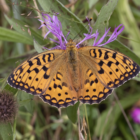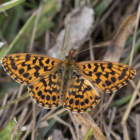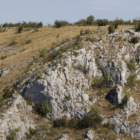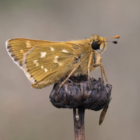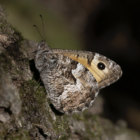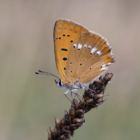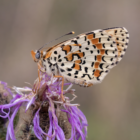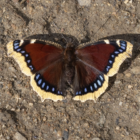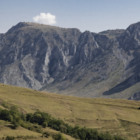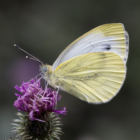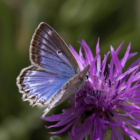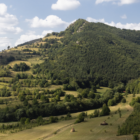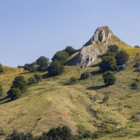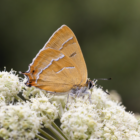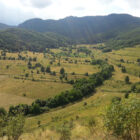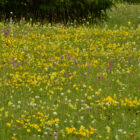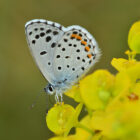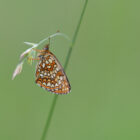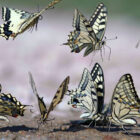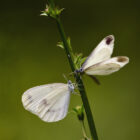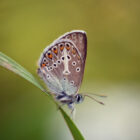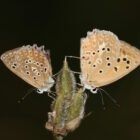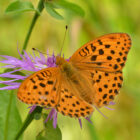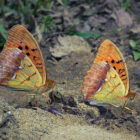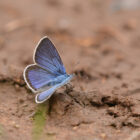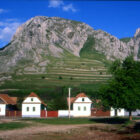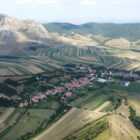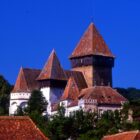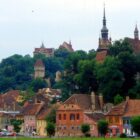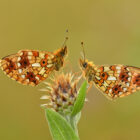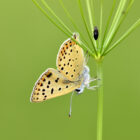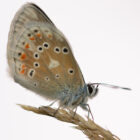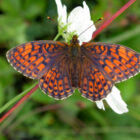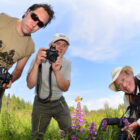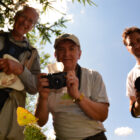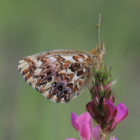Dates & Prices |
BOOK NOW |
Dates: 13th – 21st July 2025 Confirmed departure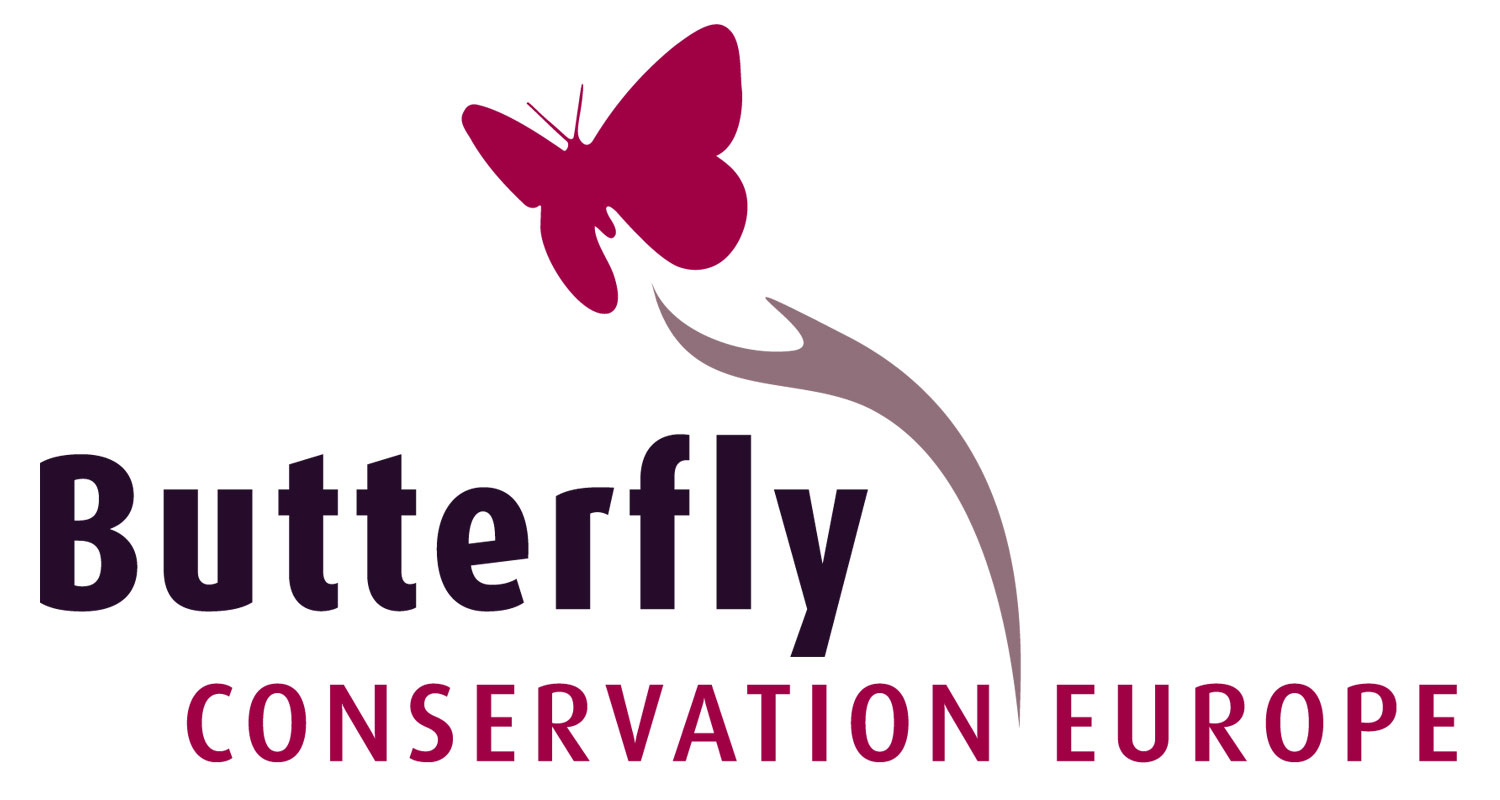
Price: £1,645 1 place
Single Room Supplement: £195
Deposit: £150 per person
Price Includes: Accommodation, all meals, ground transport, services of guides & holiday report
Not Included: International travel, travel insurance, drinks, optional bear hide session & other personal items
Conservation Donation: Butterfly Conservation Europe
Leader(s): Adrian Hoskins & Lajos Nemeth
Group Size: Minimum 4 & maximum 6 guests + 2 leaders
Grade: Generally easy walking at a gentle pace
Holiday Highlights
- An exclusive 9 day tour designed to see an exciting range of 105 – 120 species of butterflies
- Genuine small group tour with 6 guests and 2 leaders, which means you get a high quality experience & sensitive habitats get protected
- This small group size will suit those into photography perfectly too!
- Butterfly highlights may include Danube Clouded Yellow, Camberwell Beauty, Violet Copper, Fenton’s Wood White, Poplar Admiral, Titania’s Fritillary, Transylvanian Turquoise Blue, the runcensis form of Black Ringlet & many more!
- Led by two of the best butterfly guides in Europe, with decades of experience of leading similar tours in Europe & worldwide
- Plenty of other flora & fauna to enjoy too – including an optional bear hide session & site visit for Wallcreeper
- Contribute to conservation, as always with Greenwings, with a donation to Butterfly Conservation
A new butterfly tour in Romania, for the rare Danube Clouded Yellow, Camberwell Beauty, Purple Emperor, lots of Fritillaries & more!
A new butterfly tour in Romania, for the rare Danube Clouded Yellow, Camberwell Beauty, Purple Emperor, lots of Fritillaries & more!
We are delighted to offer our clients this high quality 9 day butterfly tour to Romania in summer 2025…
On this exciting new trip we expect to see some of the best butterflies of Europe, and to enjoy the authentic traditional villages, unspoiled rural landscapes and stunning medieval towns that showcase the real Transylvania. Bordered on three sides by the Carpathian Mountains encompassing one-third of Romania, and against a backdrop of breath-taking scenery, we expect to see a wonderful variety of butterflies including the much sought after Danube Clouded Yellow, Camberwell Beauty, Purple Emperor, Poplar Admiral, Swallowtail and a host of fritillaries, blue, coppers and satyrs.
There are several more reasons why we believe this is the best butterfly tour you will find in Romania:
- It is a 9 day trip, giving you more time in the field and a more relaxing holiday
- No more than 6 guests in the group mean viewing and photography opportunities will be maximised for everyone
- 2 expert guides with decades of tour leading experience and a vast bank of knowledge about butterflies and other wildlife. They can also give a lot more attention to each of our guests with such a small group size
Our adventure covers parts of Apuseni Mts., remote Bucovina, the Eastern Carpathians, from where we explore several distinctive habitats, including cold bogs, volcanic, dolomite and limestone slopes, high mountain pastures, and the two largest gorges of the country. For nine magical days, we will deliberately lose ourselves in a Europe unfamiliar to most travellers. Apart from the great butterflies and wildlife, we will taste the freshest ethnic dishes and local wines served by proud village hosts. We will see diverse ethnic groups, each with their own architectural style, traditions and dress. Charcoal makers and sheep-cheese makers decorate the roadside, and we will take magical butterfly-walks rewarded with picnic lunches in the meadows of the famed Transylvania.
Romania has 179 butterfly species, making it one of the richest faunas of Eastern Europe, with 16 designated Prime Butterfly Areas, covering some 120,000 hectares. The north and western part of the country has a very central European character, while the southern and eastern part are drier, with aspects of steppe and mediterranean vegetations. Because nowadays land use is still very traditional, many species that are threatened in most of Europe still have good—albeit often local—strongholds in Romania.
Our goal on this tour is to see the last European populations of Danube Clouded Yellow, now on the brink of extinction, and to encounter some currently under-recognised, but very distinctive endemics, like the Transylvanian Turquoise Blue, and the runcensis form of Black Ringlet. We’ll also see a great variety of other species including Titania’s Fritillary, Camberwell Beauty, Purple Emperor and Poplar Admiral. Hopefully we can also see Violet Copper, which has only 2-3 populations in Transylvania.
We expect places to go quickly on this tour so please register your interest or book soon to avoid disappointment!
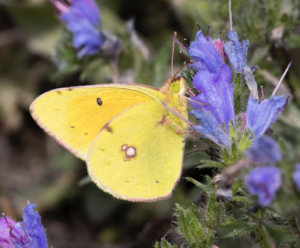
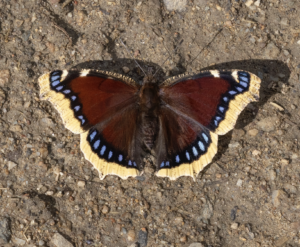
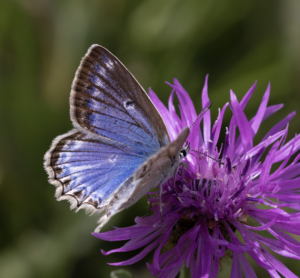
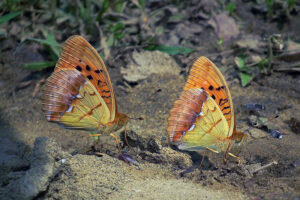
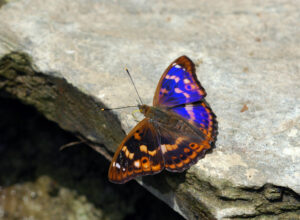
Day 1:
Arrival at Cluj Airport from where we will travel by minibus to Rimetea.
Today we explore the slopes of Turda Gorge, the second largest gorge of the country. The canyon, formed through the erosion of the Jurassic limestone mountain, is 2900 m long and the walls have heights reaching 300 m. The total surface of the canyon is of 324 ha, and considered to be a botanical mecca, with more than 1000 species (1/3 of the total Romanian) recorded, among them six endemics. This is one of the richest and most scenic karst landscapes in Romania. The area holds the second, but far smaller population of DCY, alongside with the rare Lesser Clouded Yellow and Eastern Pale Clouded Yellow.
A short drive takes us to the eastern foothills of the Apuseni Mts. Rimetea village with its beautiful hill called Secler Rock, is located in a very impressive sub-alpine landscape. Extremely abrupt slopes oriented towards the south have contributed to the maintenance of species which are often characteristic for the high mountains, here at an unusually low altitude.
We certainly will enjoy wonderful and rich traditional foods, in amount and variety.
Overnight Rimetea
Day 2:
A full day in the surroundings of Rimetea village, which include Coltesti’s fortress-hill and Aiud Gorge. A famous endemic of the area is the beautiful runcensis race of Black Ringlet, distinctive enough from the Balkan populations to possibly be worthy of full species status. We will dedicate time for Fenton’s Wood White, which occurs here, as do and Yellow-legged Tortoiseshell, Lesser Fiery Copper, and a large array of Fritillaries and Blues. It is an area where we got a record number 84 species in a day, so our expectations can be high. For the birders Rock Thrush, Alpine Swift, Red-rumped Swift, Crag Martin, Rock Bunting, Grey Partridge, and Scops Owl can be a delight. We will definitely see the 60 year old giant nest of Golden Eagle and with luck we might see them soaring overhead.
Overnight Rimetea
Overnight in Poiana Stempei
Days 5 & 6:
A spectacular drive to our next destination, the home of the famed Danube Clouded Yellow (DCY). Despite serious efforts and money spent in other parts of Romania, no further colonies were discovered in the last couple of years, so as far as we know, this species now only occurs at 2-3 remote and isolated colonies. The species was quite common until the end of the 90’s, when it was followed by a spectacular decline. The species is now extinct in Slovenia and Hungary, probably also in Slovakia and Poland from where a few doubtful records exist. Transylvania may be the last stronghold for the conservation of DCY. The optimal habitat seems to be represented by vast mezophilous to mezoxerophilous meadows marked by shrubs and/or trees, reminiscent of sylvicol-steppes. The most suitable meadows are those which are moderately grazed, but still preserve an abundance of the Cytisus foodplants, in a mosaic habitat consisting of various tree and/or shrub densities alternating to more or less steep slopes of open land. We will dedicate serious time for DCY, and we also make a serious effort today to record some Transylvanian Turquoise Blues (TTB), a very distinctive form, described in 1985 as race magna. Distinctive colours and very large size (comparable to Large Blue) makes this butterfly a good candidate for species status. It lives only in this small corner of Transylvania, and flies in very low numbers. This is also the best part of Transylvania for Camberwell Beauty and Poplar Admiral, Geranium Argus and many more.
Overnight Gheorghieni
Day 7:
A backup morning for DCY and TTB in case of bad weather situation. If the previous day was successful, than we explore some small marshlands nearby. Another option can be the most monumental and very narrow gorge of the East Carpathian range, the Békás (Bicaz)-gorge, with hundred meters high walls, and Lake Gyilkos (Lacu Rosu), an area popularly known as the “Switzerland of Transylvania”. In 1837 a small stream was closed by a landslide in this forested valley, and the basin filled with water. The lake gets its name because, according to the legend, a shepherd and all his animals were killed by the landslide. The scenery is very strange as the trunks of the dead trees still stand in the water because of the high grade of iron of the water. Above the lake is the Tunder (Fairy) Rock, which gives a gorgeous view to this enigmatic place. The famous “Edelweiss” adorn the peaks. Bicaz Gorge is also famous for one of the most desirable birds of Europe, the Wallcreeper. This territory is the land of another strange ethnicity and culture, the Chango people, who speak Hungarian, but picked up many Romanian cultural elements. They have very special traditions, dances, folk, costumes. In the area we look again for the endemic race of Titania’s Fritillary, Emperors, Camberwell Beauty, Poplar Admiral.
Overnight Gheorghieni
Day 8:
Today we drive and explore the Harghita-range, which is a volcanic mountain range, part of the Inner Eastern Carpathians. The range is about 80 kilometers long and 20 kilometers wide, and is the “largest andesite mass” and the “largest volcanic body in the whole of Europe”. Its tallest peak is Hargita (Madarasi Hargita, 1801 metres). The landscape is so rural and commanding, that you will feel as if you have travelled 100 years back in the time! The peaks are mainly covered with beech and thin coniferous woods, giving great habitat for the stronghold of the Romanian Brown Bear population, estimated to be around 7000 in numbers. The forests having a sizeable population of Capercailie, Hazelhen, Three-toed Woodpecker and many other pine-species, like Ring Ouzel, Nutcracker, Coal Tit, Crested Tit, Crossbill, Firecrest and Goldcrest. Golden Eagles soar on the sky quite frequently. One of the target species here is Pallas’ Fritillary, which is a major rarity in Transylvania. Other roadside fritillaries are flying in large numbers, along with Scotch Argus and Arran Brown. Another great and widespread species of the area is the lovely Hungarian Glider.
Overnight Gheorghieni
Day 9:
Depart from Gheorghieni and drive to Cluj in time for evening departure flights. Depending on time available we may make a final stop or two for butterflies on the way.
- Danube Clouded Yellow
- DCIM100MEDIADJI_0470.JPG
Expected species (105-120):
Aglais urticae (Small Tortoiseshell)
Apatura ilia (Lesser Purple Emperor)
Apatura iris (Purple Emperor)
Aphantophus hyperanthus (Ringlet)
Araschnia levana (Map Butterfly)
Arethusana arethusa (False Grayling)
Argynnis adippe (High Brown Fritillary)
Argynnis aglaja (Dark Green Fritillary)
Argynnis niobe (Niobe Fritillary)
Argynnis paphia (Silver-washed Fritillary)
Argyronome laodice (Pallas’s Fritillary)
Aricia agestis (Brown Argus)
Aricia allous Alpine (Mountain Argus)
Aricia eumedon (Geranium Argus)
Boloria dia (Weaver’s Fritillary)
Boloria titania (Titania’s Fritillary)
Boloria euphrosyne (Pearl-bordered Fritillary)
Boloria selene (Small Pearl-bordered Fritillary)
Brenthis daphne (Marbled Fritillary)
Brenthis hecate (Twin-spot Fritillary)
Brenthis ino (Lesser Marbled Fritillary)
Brintesia circe (Great Banded Grayling)
Celastrina argiolus (Holly Blue)
Carcharodus alceae (Mallow Skipper)
Carcharodus flocciferus (Tufted Marbled Skipper)
Chazara briseis (The Hermit)
Coenonympha arcania (Pearly Heath)
Coenonympha glycerion (Chestnut Heath)
Coenonympha pamphilus (Small Heath)
Coenonympha tullia (Large Heath)
Colias alfacariensis (Berger’s Clouded Yellow)
Colias chrysotheme (Lesser Clouded Yellow)
Colias crocea (Clouded Yellow)
Colias erate (Eastern Pale Clouded Yellow)
Colias hyale (Pale Clouded Yellow)
Colias myrmidone (Danube Clouded Yellow)
Cupido minimus (Little Blue)
Cupido osiris (Osiris Blue)
Cyaniris semiargus (Mazarine Blue)
Cynthia cardui / Vanessa cardui (Painted Lady)
Erebia aethiops (Scotch Argus)
Erebia euryale (Large Ringlet)
Erebia ligea (Arran Brown)
Erebia melas (Black Ringlet)
Erynnis tages (Dingy Skipper)
Everes argiades (Short-tailed Blue)
Everes decoloratus (Eastern Short-tailed Blue)
Gonepteryx rhamni (Brimstone)
Hamearis lucina (Duke of Burgundy Fritillary)
Hesperia comma (Silver-spotted Skipper)
Hipparchia fagi (Woodland Grayling)
Hipparchia semele (Grayling)
Inachis io / Aglais io (Peacock Butterfly)
Iphiclides podalirius (Scarce Swallowtail)
Issoria lathonia (Queen of Spain Fritillary)
Lasiommata maera (Large Wall Brown)
Lasiommata megera (Wall Brown)
Leptidea morsei (Fenton’s Wood White)
Leptidea sinapis (Wood White)
Libythea celtis (Nettle-tree Butterfly)
Limenitis camilla (White Admiral)
Limenitis populi (Poplar Admiral)
Lopinga achine (Woodland Brown)
Lycaena dispar (Large Copper)
Lycaena hippothoe (Purple-edged Copper)
Lycaena phlaeas (Small Copper)
Lycaena thersamon (Lesser Fiery Copper)
Lycaena tityrus (Sooty Copper)
Lycaena virgaureae (Scarce Copper)
Maculinea/Phengaris arion (Large Blue)
Maculinea/Phengaris teleius (Scarce Large Blue)
Maculinea/Phengaris tolistus (Balkan Alcon Blue)
Maniola jurtina (Meadow Brown)
Melanargia galathea (Marbled White)
Meleageria daphnis (Meleager’s Blue)
Melitaea athalia (Heath Fritillary)
Melitaea britomartis (Assmann’s Fritillary)
Melitaea diamina (False Heath Fritillary)
Melitaea didyma (Spotted Fritillary)
Melitaea fascelis (Lesser Spotted Fritillary)
Melitaea phoebe (Knapweed Fritillary)
Minois dryas (Dryad)
Neozephyrus quercus (Purple Hairstreak)
Neptis rivularis (Hungarian Gilder)
Neptis sappho (Common Glider)
Nymphalis antiopa (Camberwell Beauty)
Nymphalis polychloros (Large Tortoiseshell)
Nymphalis xanthomelas (Yellow-legged Tortoiseshell)
Ochlodes sylvanus (Large Skipper)
Papilio machaon (European Common Swallowtail)
Pararge aegeria (Speckled Wood)
Philotes vicrama (Eastern Baton Blue)
Pieris brassicae (Large White)
Pieris bryoniae (Mountain Green-veined White)
Pieris ergane (Mountain Small White)
Pieris manni (Southern Small White)
Pieris napi (Green-veined White)
Pieris rapae (Small White)
Plebejus argus (Silver-studded Blue)
Plebejus argyrognomon (Reverdin’s Blue)
Plebejus idas (Idas Blue)
Polygonia c-album (Comma Butterfly)
Polyommatus amandus (Amanda’s Blue)
Polyommatus bellargus (Adonis Blue)
Polyommatus coridon (Chalk-hill Blue)
Polyommatus dorylas (Turquoise Blue)
Polyommatus icarus (Common Blue)
Polyommatus magnus (Transylvanian Turquoise Blue)
Polyommatus thersites (Chapman’s Blue)
Pontia edusa (Eastern Bath White)
Pyrgus alveus (Large Grizzled Skipper)
Pyrgus armoricanus (Oberthür’s Grizzled Skipper)
Pyrgus malvae (Grizzled Skipper)
Satyrium spini (Blue-spot Hairstreak)
Scolitantides orion (Chequered Blue)
Spialia orbifer (Orbed Red-underwing Skipper)
Thecla betulae Brown (Hairstreak)
Thymelicus flavus (Small Skipper)
Thymelicus lineola (Essex Skipper)
Vanessa atalanta (Red Admiral)
to follow later



